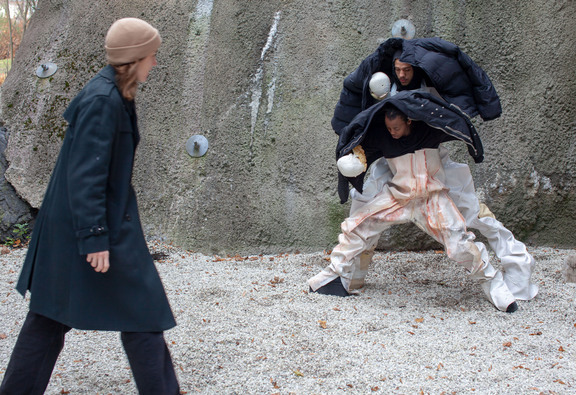
Exploring the role of the costume
The artistic research project Costume Agency set out to explore how the costume can be an element in its own right in a performance. In the upcoming conference Critical Costume 2020, artists and academics will discuss how it actually does so.
What is the role of the costume in a performance? Can, for instance, the costume be at “the centre of gravitation”, as opposed to the text? This is what the project Costume Agency set out to explore in 2018, when project leader and professor in costume design at KHiO, Christina Lindgren, started the project which this year’s Critical Costume conference will explore.
– It is important to understand what costume design is, and that performance has changed. The costume is not just depicting an era or a social status. It is finally established that it is a performative element in its own right, explains Sodja Lotker. She is the Course Leader of Master in Directing and Object Theatre, Prague Performing Arts Academy (DAMU).
Changes with the post-dramatic theatre
The early history of theatre was predominantly with the text as the driving force of the play, with plot and character dictating the narrative development. Scenography, lighting and costume added to the totality of the play, but the text was the focal point. Now, during the Costume Agency research project, a series of performances will be developed where costume serves as a starting point and core element.
– There is a momentum now, to see costume design as a discipline, parallel to scenography and fashion design. Historically, costume design has only partly been accepted as a discipline in its own right in the theatre, but after the post-dramatic theatre something changed. With this project we want to give a platform for designers to explore how costume perform and how the costume can be an element in its own right, and contribute to the totality of a performance, says Christina.
– Traditionally, the costume designer is the last to come in, and has been the least powerful in the theatre group. In this regard, this project and the Critical Costume conference can be seen as an emancipation of the costume designer, says Sodja.
Changed to a digital platform
The conference was initially supposed to be held in Oslo in a physical format, but due to the coronavirus, it will now be hosted in a new format. The conference will consist of a library of pre-recorded videos, series of working group discussions on Zoom, and with a series of panel discussions. The exhibition will be digital.
– The conference in itself is an academic format, and with paper presentations in the form of videos, group discussions online in August and curated panel discussions coming in the autumn. The Costume Agency is mainly artistic research with a performative element, through art, not theory. Can the costume be a starting point in a performance? What is the potential focal point? This is what we want to explore during the Critical Costume conference, says Christina.
With the change to a digital format, Christina and Sodja were first worried about losing the live meetings and networking element, which are important elements in addition to what is strictly academic. Now, they both see the added potential of having people from all over the world send in videos which will be made permanently available.
– We feel lucky that people from all continents can see this, with the variety of contributions we will receive on video, these are actually artistic projects in their own right. It’s a mapping of possibilities, with a social and narrative aspect, it’s a project that will make visible the costume designer as an important element in the performance, Sodja explains.
Over the duration of this project a series of performances will be developed where costume will serve as a starting point and core element. The costume designer will take the creative lead in the project and will be responsible for the artistic vision from initial idea to final presentation.




